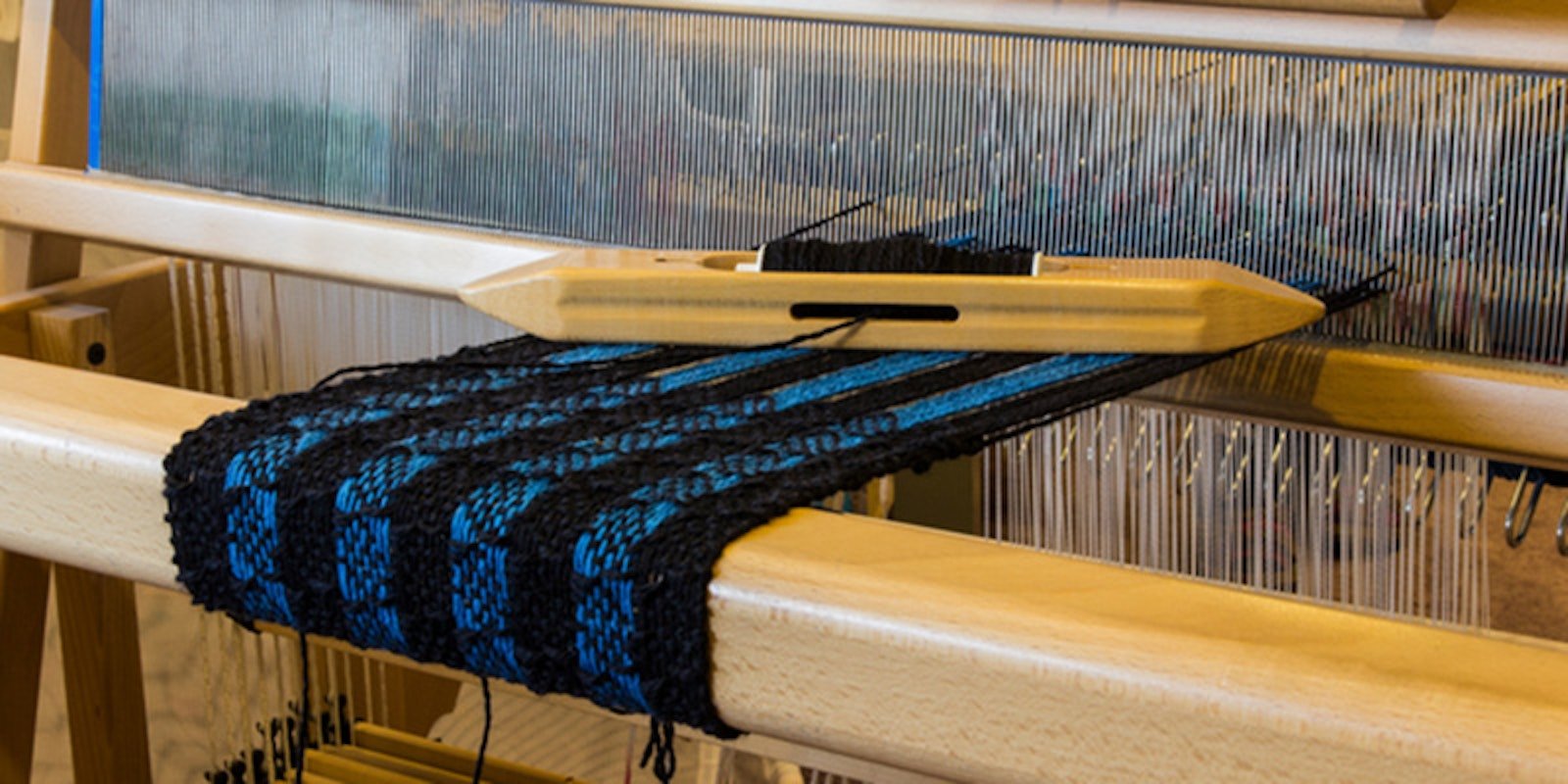I recently heard the phrase, “If all you have is a hammer, everything looks like a nail,” and it caught my attention. After looking it up, I learned that is known as the “law of the instrument,” a term coined by Abraham Maslow in 1966. The concept is based on people overusing the tools they have rather than using the correct tool for the job. I’ve been thinking about how weavers might adhere to the concept by using the weaving tools we have at our disposal, without considering other tools.
Inkle looms do their job perfectly! Photo credit: George Boe
I used to use my 8-shaft floor loom for everything because it was the only loom I had. I took out the reed and wove inkle bands on it, I used it for tapestry techniques, and I threaded it with slubby and delicate yarns that broke in the warp. When I finally learned how to weave on an inkle loom , I saw how much better it was for weaving bands. Tapestry is more fun for me when I can weave it vertically and the loom is portable. Delicate and slubby yarns work well on a rigid-heddle loom, as long as I keep the slubby yarns in the slots. I suppose I could have survived without the other looms, but they certainly make weaving more enjoyable and versatile.
If this is your stash, you may not feel very constrained! Photo credit: Elisabeth Hill
Many weavers, myself included, also practice the law of the instrument when it comes to yarn:
- We have a lot of yarn in our stashes so we try to work out projects that use it even though the colors and types aren’t quite right.
- We get comfortable with a type of yarn and decide it will work for everything from tea towels to shawls, even when our towels don’t pick up water, or our shawls are stiff.
- We always sett a certain yarn at a certain epi and then are disappointed with how some of our projects turn out.
- We use certain colors of yarn over and over, and don’t break out of our color ruts.
Habits aren’t easy to break, but sometimes the results of breaking habits make it worth the effort.
Figure out which tools you overuse. You may find better ways of doing things in the process.
Weave well,
Susan



